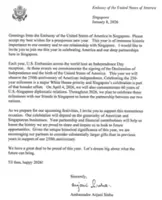The new criteria will reduce the risk of green or transition washing by banks and financial institutions. - PHOTO: ST FILE
DUBAI: To boost climate mitigation across eight key sectors, Singapore has set new criteria for banks and financial institutions on the financing of green business activities, and transitional activities that are currently not green but are on a pathway to net-zero emission.
This will reduce the risk of green or transition washing by banks and financial institutions and ensure that transition activities will meet the green criteria over time.
Already a subscriber? Log in
Save 30% OFF The Star Digital Access
Cancel anytime. Ad-free. Unlimited access with perks.





